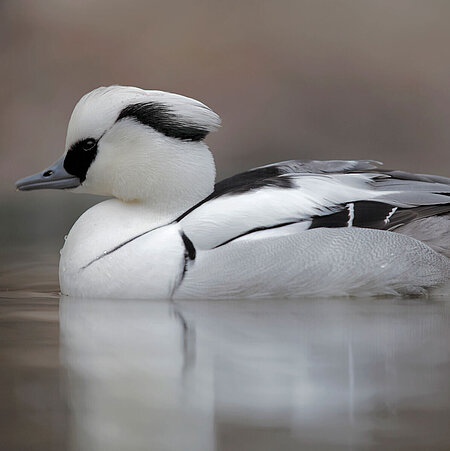Smew
Mergus albellus

- Family
- Anatidae (Ducks, geese and swans)
- Weight
- 570 – 740 g
- Habitat
- Rivers and lakes near coniferous forests
Talented fishermen
The smew is one of the smallest member of the subfamily sawbill ducks. These birds have a narrower bill than most duck species. The smew’s bill also has serrated edges and a hooked tip, which help it catch slippery food such as fish or small amphibians. Adult smew dive for their prey. However young chicks must first learn to dive and until then forage for insects and larvae in shallow waters.
From courtship to offspring
Smews begin pairing off in late winter. The courtship display involves the male making an effort to impress the female by upward stretches of the head, calls, wing beating and preening. After choosing a partner, couples migrate north to their breeding ground. On arrival, they search for a nesting place in a tree cavity or occasionally a cavity in the ground, into which the female lays her eggs. As with their relative the hooded merganser, the chicks jump out of their nest one day after hatching. Then for the first one to two months the mum will teach them how to survive.
The male smew is sometimes called the white nun due to its white crest and band of black feathers on the back of its head, which resembles a hood
Distribution
